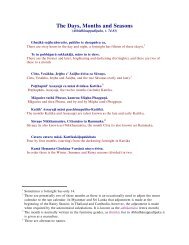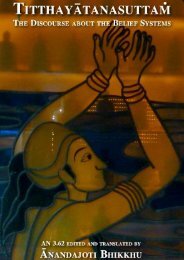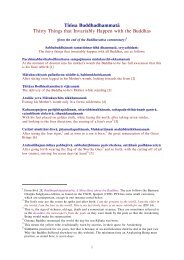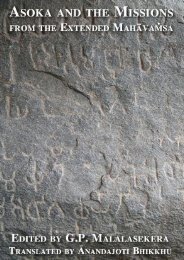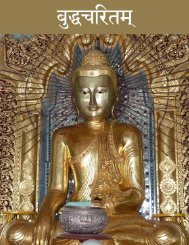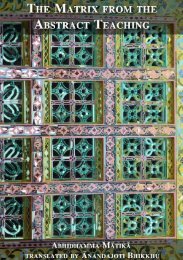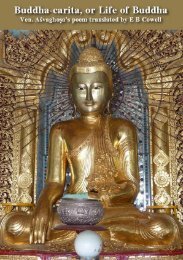The Sanskrit Text of Buddha-carita AÅvaghoá¹£a - buddhanet-de-index
The Sanskrit Text of Buddha-carita AÅvaghoá¹£a - buddhanet-de-index
The Sanskrit Text of Buddha-carita AÅvaghoá¹£a - buddhanet-de-index
- No tags were found...
Create successful ePaper yourself
Turn your PDF publications into a flip-book with our unique Google optimized e-Paper software.
Introduction to the <strong>Text</strong> - 114. Mālinī = (2 verses)In contrast Mālinī has a run <strong>of</strong> 5 light syllables in the opening. It is used as theClassical metre which closes Chapters II and XIII; 1 its scheme <strong>of</strong> 15 syllables can beoutlined like this:⏑⏑⏑⏑⏑⏑−−,−⏑−−⏑−−5. Śikhariṇī = (1 verse)This is a 17-syllable metre, which is used at the conclusion <strong>of</strong> Chapter IV, it’sscheme, which has a <strong>de</strong>finite caesura after the 6th syllable is as follows:⏑−−−−−,⏑⏑⏑⏑⏑−−⏑⏑⏑−6. Aparavaktra = (1 verse)This metre is similar to Puṣpitāgrā, but with the Vaitālīya ca<strong>de</strong>nce, thereby havingthe followng scheme:⏑⏑⏑⏑⏑⏑¦−⏑−⏑−¦¦⏑⏑⏑⏑−⏑⏑¦−⏑−⏑−It occurs as the final verse <strong>of</strong> Chapter VII.1 In the text established by Cowell, another verse follows the Mālinī conclusion, but this isspurious.




